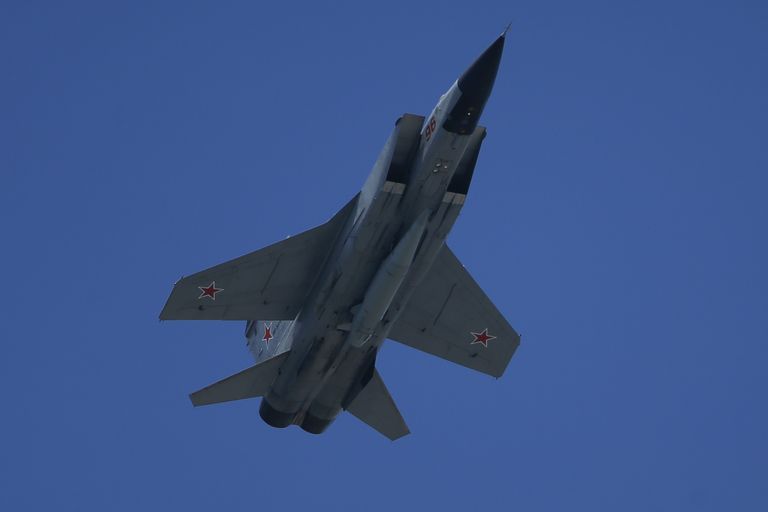
Posted on 07/10/2020 12:39:00 PM PDT by Red Badger
The amazing feat only happened once.
In 1985, a F-15A Eagle fitted with a classified missile shot down an aging weather satellite.
The test of the Anti-Satellite (ASAT) was considered a huge success.
Task & Purpose has published a rare interview with the pilot who flew the mission 35 years ago.
==============================================================================================
One of the most remarkable feats of military engineering during the Cold War was the shootdown of an actual satellite by a fighter jet. The incident was the first and only use of the AGM-135 anti-satellite (ASAT) weapon. Although anti-satellite weapon development slowed after the end of the Cold War, it's restarted in a big way, with new weapons being fielded by the U.S., Russia, and China.
Task & Purpose published an interview with Major General Wilbert “Doug” Pearson Jr., U.S. Air Force, retired. In addition to receiving the high rank of major general Pearson is the only pilot on Earth known to have shot down a satellite in orbit. Pearson accomplished this on September 13th, 1985, in the skies over the Pacific Ocean off the coast of California.
Pearson’s target was US P78-1 Solwind, an aging weather satellite.

Artist’s conception of the AGM-135 at launch. National Archives
===========================================================================================
The AGM-135 was the largest missile ever mounted on a F-15 Eagle. The weapon, designed by Vought was originally called the Prototype Miniature Air Launched System (PMALS). It was based on the Short Range Attack Missile, a nuclear-tipped missile used by the B-52 bomber. PMALS added a second stage and modified the missile to ascend straight into space, where its infrared-guided sensor package picked up the target and guided the missile into a collision.
The U.S. had built anti-satellite missiles before, but the weapons were land-based and couldn’t move. This restricted the weapon’s ability to shoot down enemy satellites. A fighter-based missile, on the other hand, could self-deploy worldwide to hit a specific satellite at a specific time. According to military space analyst Brian Weeden, the Air Force planned to purchase 112 AGM-135s and modify 48 F-15s to launch them, basing them in Washington and Virginia.

An image of the F-15A piloted by Major General Pearson releasing the AGM-135 missile, September 13th, 1985. National Archives
=============================================================================================
The program, though promising, was considered inflammatory and many believed would end up militarizing space. The program was killed in 1988, Weeden explained at The Space Review “due to a combination of Congressional restrictions on its testing, budget restrictions, and concerns over potentially igniting a space arms race with the Soviets."
U.S. fears of igniting a space arms race may only have delayed the inevitable with the introduction of global positioning satellites such as the American GPS, Russian GLONASS, or Chinese Beidou, making anti-satellite weapons more useful than ever before. The U.S., Russia, China, and India have all tested anti-satellite weapons.

A MiG-31 carrying the Kinzhal hypersonic weapon. The Burevestnik anti-satellite missile (no relation to the nuclear-powered cruise missile) carried by the MiG-31 is actually a bit longer. Anadolu Agency
================================================================================================
The U.S. SM-3 missile, designed to shoot down enemy ballistic missiles, also has an anti-satellite capability. In 2008 a SM-3 shot down a U.S. military reconnaissance satellite that had malfunctioned and threatened to shed a toxic hydrazine tank on reentry. The Ground Based Interceptor, designed to protect the continental U.S. from ballistic missile attacks, also reportedly has a limited anti-satellite capability. Worldwide, Russia has the land-based Nudol anti-satellite missile and what appears to be a AGM-135-type weapon on the MiG-31 Foxhound fighter. China destroyed a satellite in 2007 with an ASAT weapon, while India successfully tested a land-based system in April 2019.
The AGM-135 was a pioneering system but by no means the last. Although the U.S. is avoiding building mission-specific anti-satellite weapons for now, it seems inevitable the Pentagon will field such a weapon—if it doesn’t already.
Source: Task & Purpose.
I assume a laser will burn out a satellite sensors without blowing it to bits.
As long as it doesn’t hit the fuel tank!...................
Disclaimer: Opinions posted on Free Republic are those of the individual posters and do not necessarily represent the opinion of Free Republic or its management. All materials posted herein are protected by copyright law and the exemption for fair use of copyrighted works.